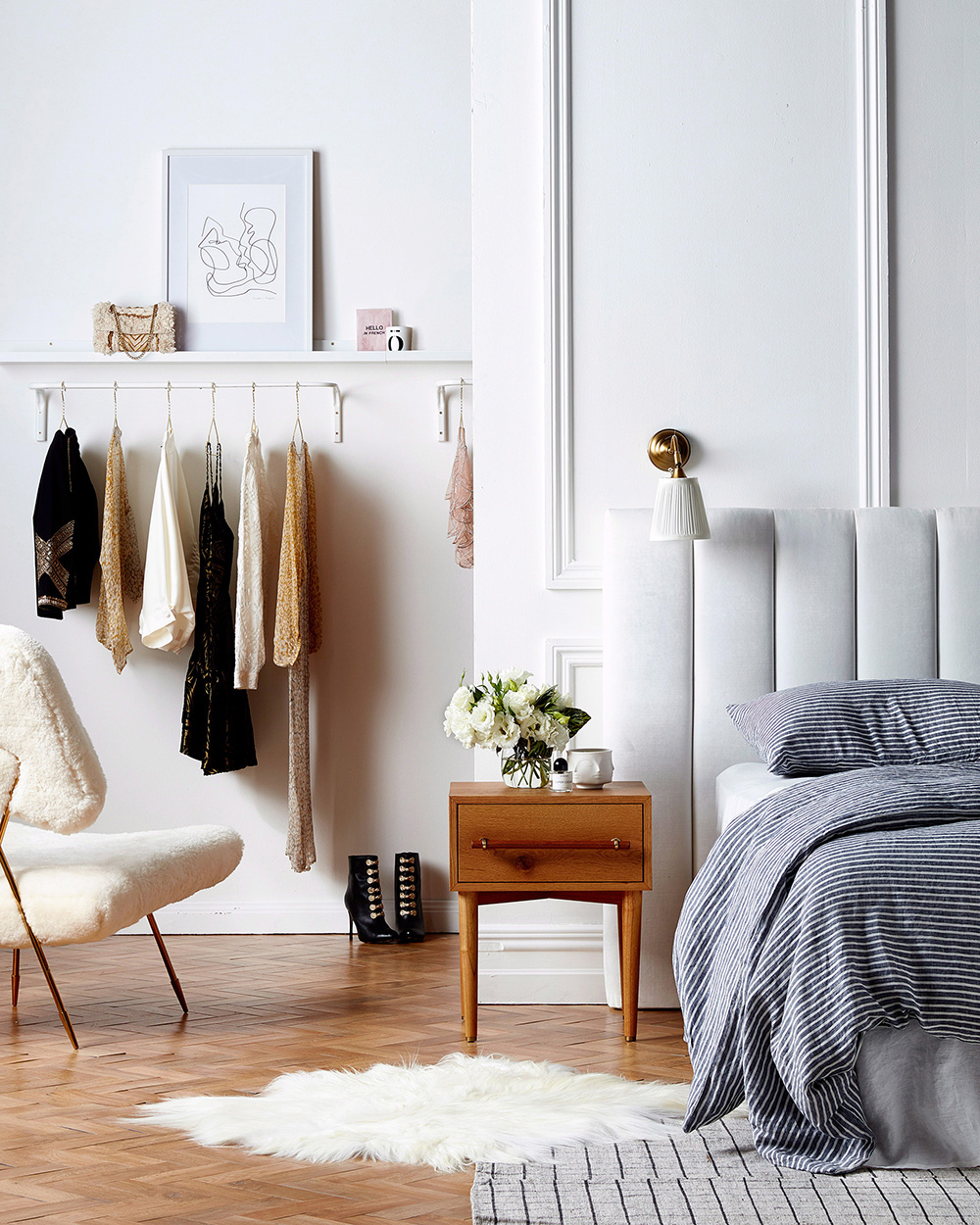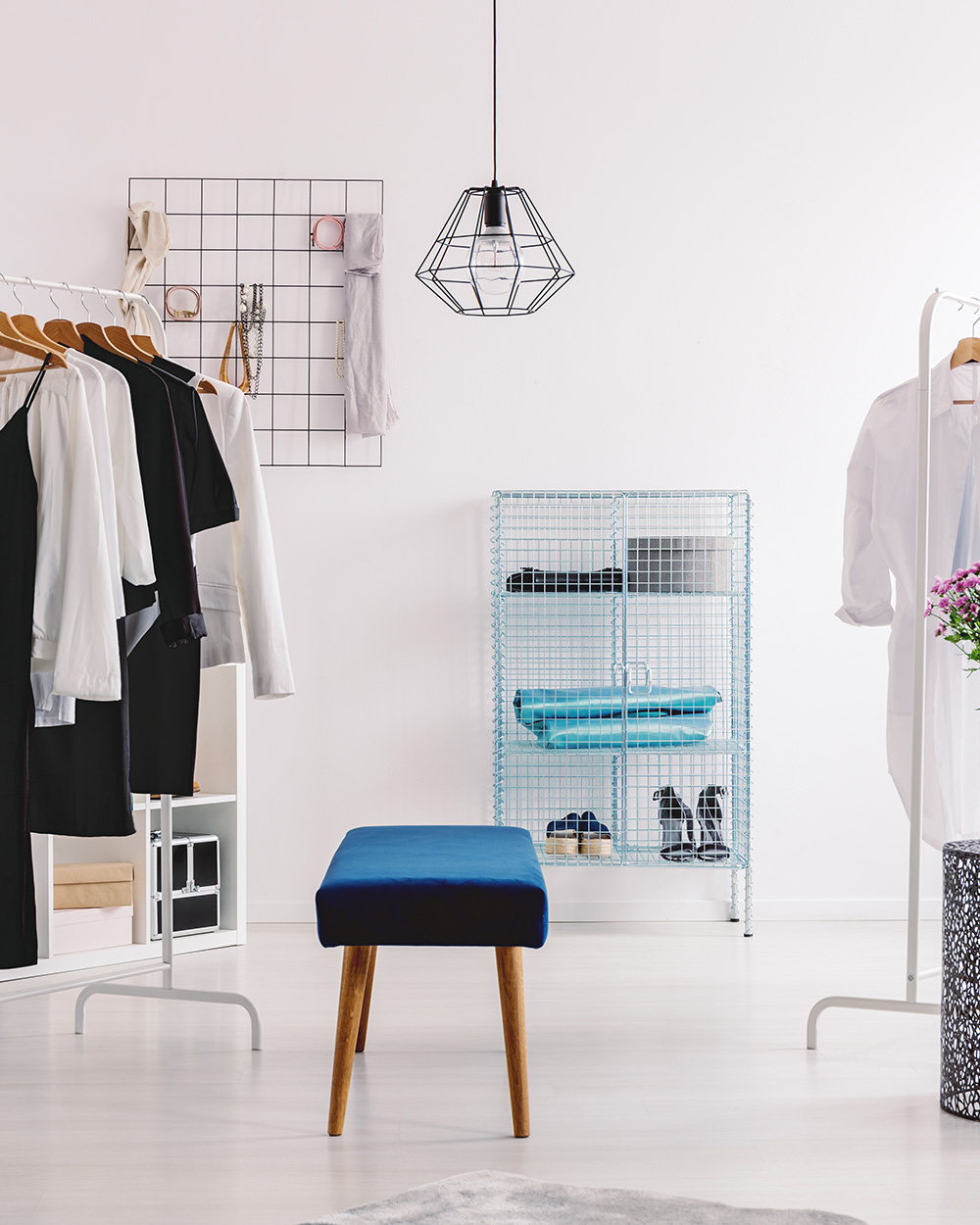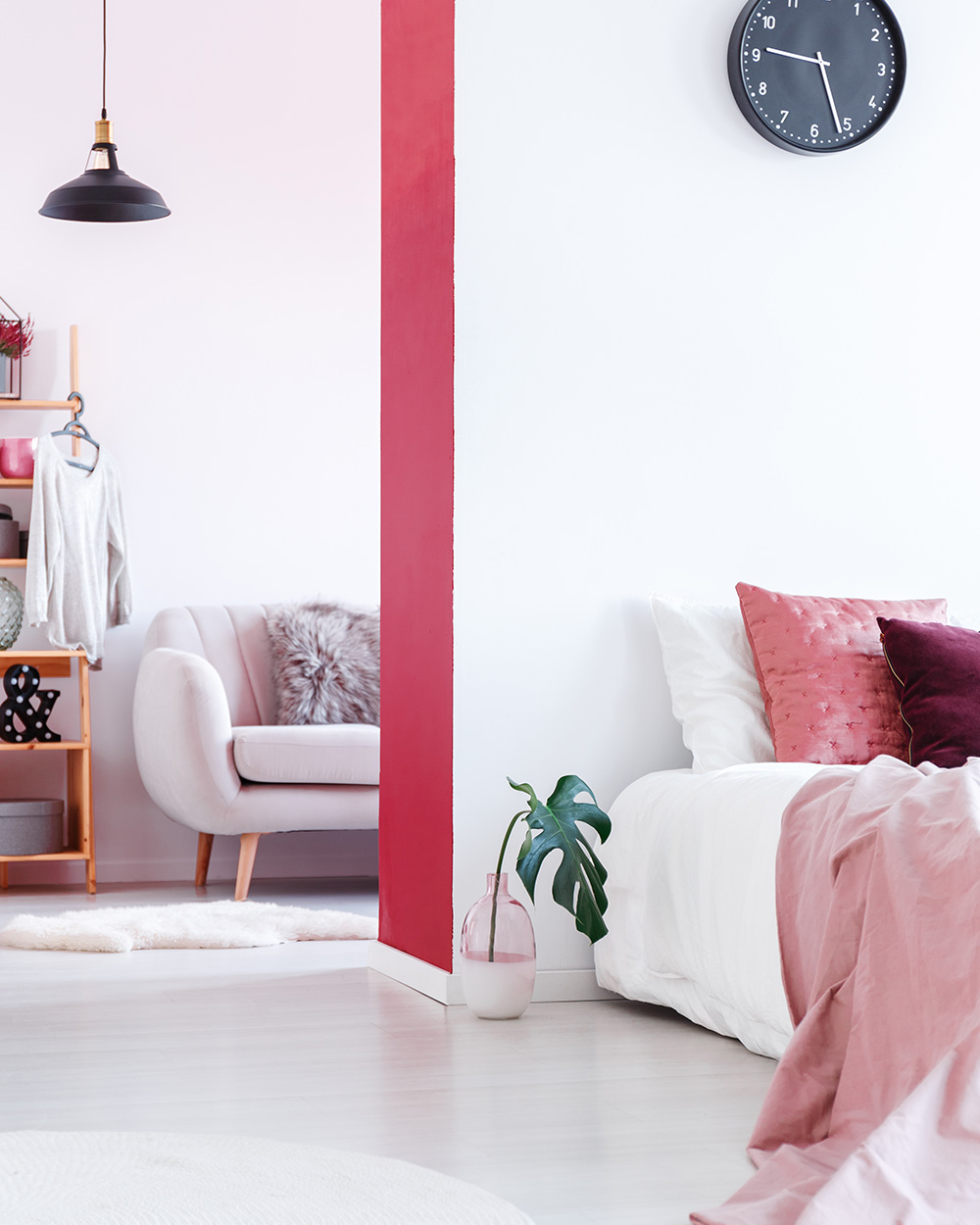
Build a functional, beautiful wardrobe that will make getting dressed a joy.
Anyone who’s seen Clueless will know what the ideal wardrobe looks like: a hidden rail of endlessly gorgeous clothes and accessories, all accessed by touchscreen and curated by a digital styling assistant.
But sadly, this vision from 1995 hasn’t yet come to pass. Our wardrobes are still mostly chaotic places we struggle to keep in order. Luckily, the systems available to help us do this are always improving, and experts have plenty of hints to help us create our dream ’robes.
Whether you’re building a new wardrobe or renovating an existing, the planning phase is key for creating a space that makes getting dressed easier, rather than more complicated; take your wardrobe from jumbled to ingenious.
The plan
A great first step to planning your dream wardrobe is to visit a specialist showroom to see what systems might work best and what arrangements feel the most useful for your lifestyle.
Christopher Martin, director of Boston Wardrobes, says it’s best to start by thinking about your lifestyle and what you wear most; “ask yourself: what are the most important clothing items I want to store in my wardrobe?”

The budget
Fit-outs can cost anywhere from $50 for a plain railing to $10,000 for multiple custom storage solutions with high-end finishes. But money spent in this area is not necessarily frivolous – a well-planned and installed wardrobe can be a huge selling point. “Wardrobes have now become a very important way to add real value to your home,” says Christopher.
Walk-in or reach-in?
This question is all about the maths. Do you have a recessed space at least 2.4m deep and 1.5m wide? If not, it’s a standard reach-in wardrobe for you. But if you’re lucky enough to have a large walk-in space available, you’ll need to plan carefully to ensure it is easily accessible.
For a walk-in wardrobe:
- Aim for a minimum of 2.4m of wall space per person (without additional bedroom furniture).
- Allocate 600mm for the widest items you wish to hang, plus an extra 100mm for easy viewing.
- You’ll need a corridor of at least 800mm as your ‘walk-in’ space.
- If your wardrobe adjoins an ensuite, ensure the bathroom is very well-ventilated to avoid dampness settling into your clothing. A door is essential, as is an effective extractor fan.
For a reach-in wardrobe:
- You’ll need a minimum width of 1.8m if you have no other type of garment storage in the bedroom.
- Hanging clothing can protrude as much as 600mm from the back of the wardrobe, plus it’s best to add another 100mm to the wardrobe’s depth for easy viewing and access.
- If possible, take doors and storage up to the ceiling to maximise the usefulness of the space.
- More space means better ventilation, so plan for more storage than you need, if possible.

The fit-out
- Prep You’ll still need the walls of your wardrobe lined and finished just like every other room in the house. Make sure you have your lighting and power point locations all sorted before you call in the plasterer. Adding statement wallpaper at this point can be a fun way to give a little personality to your wardrobe space.
- Rails Hanging space for coathangers is the backbone of wardrobe design, but how many rails and where will depend on your style. Long dresses and coats will need their own rail, as will mid-length items. Tops and skirts can be hung in a two-tiered rail formation, one above the other. The rail lengths will depend on which items you favour and the volume of pieces you want to keep in circulation. Audit your most-worn clothes and count up the items. Are you a dress lover? Add more space for long items. Prefer a more casual style of shorts or skirts and tops? Create a two-tiered system that makes it easier to pair separates.
TIP Running hanger rails to the edges of your wardrobe is more practical and affordable than fitting corner shelves.
- Shelving Garments such as sweaters and jeans are best kept on an open shelf, about 400mm deep is ideal. All woollen clothing should be stored on an open shelf. Avoid towering piles of jumpers by using dividers to keep them contained, and add more levels of shelves rather than stacking any pile higher than it is wide.
- Drawers are best for storing underwear, socks, T-shirts, sportswear and nightwear. Jewellery, belts, scarves and other small items are best kept out of sight in drawers, too. You can either install drawers to fit your chosen storage system, or simply buy a drawer unit to fit your space. Using secondhand drawers can help keep costs down and can make your wardrobe feel more individual.
- Shoes The standard depth for shoe shelves is 300mm.Women’s dress shoes usually require 180-200mm and men’s dress shoes require 230-250mm per pair. Cubby-style shelving is ideal for shoes but can be costly, so simple shelves with baskets or transparent boxes may suit your budget better.
TIP Use adjustable fittings in kids’ wardrobes so the arrangement can be changed as they grow.
Wardrobe tips from Natalie Jane of ‘Be Organised’
- Shoe storage is all about your personality. Have lots of shoes that you wear often? Invest in built-in cubby shelves. Have trouble putting shoes away? Set up a basket to chuck them in and tidy it once a week. Be honest about your habits and plan storage to suit.
- Slim, shallow shoe baskets arranged longways on shelves are great for casual sandals, jandals and flats. Keep less-used shoes in clear, labelled boxes so you can still see them when stored up high.
- Put belts onto ‘S’ hooks and hang them on a clothing rail, or coil them up in a drawer and install dividers to keep them neat.
- Jewellery is ideal in a drawer where it can be seen easily – use an organiser to maintain order.
- Spare wall space? Add wooden doorknobs or beautiful hooks for hanging your favourite bags and scarves. Make a feature out of it!
- The end of each season is an ideal time to cull your wardrobe. Didn’t wear it this year? Then you probably won’t wear it next year.
- Short on time? Sort clothes into outfits, take photos of those outfits and stick them on the wardrobe wall for easy recall.
- To avoid mess and frustration, don’t fill your wardrobe beyond 75 per cent. If it’s getting chocka and you can’t face a cull, ‘archive’ rarely worn or sentimental items – under the bed or in a spare bedroom – so your wardrobe remains functional.










